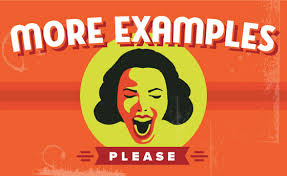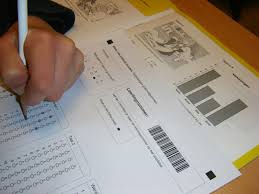 Efficiency and organization are vitally important to successful SAT Writing preparation. If you don't have a good game plan for your preparation, you're likely to waste time on things that may not be helping you improve your SAT Writing score. Implementing specific, proven strategies during your SAT Writing prep will allow you to make the best use of your time and fully prepare yourself for the SAT Writing section.
Efficiency and organization are vitally important to successful SAT Writing preparation. If you don't have a good game plan for your preparation, you're likely to waste time on things that may not be helping you improve your SAT Writing score. Implementing specific, proven strategies during your SAT Writing prep will allow you to make the best use of your time and fully prepare yourself for the SAT Writing section.
In this post, I will share with you my top 9 strategies for SAT Writing. These aren’t strategies you’ll be able to use if you try to employ them the night before the test. They need to be implemented over time to be effective.
The strategies are:
- Learn the Rules
- Study Example Questions
- Practice with Official Tests
- Know What's in Each Section
- Explain Your Reasoning
- Focus on Your Target Score
- Simulate Test Day Conditions
- Use What's Underlined to Determine Your Approach
- Look for the Most Common Errors First
SAT Writing Study Strategies
The first section of strategies I'm giving you are study strategies. These are strategies you should use and focus on while you're studying for the SAT Writing section.
#1: Learn the Grammar Rules
The SAT tests the same grammar rules over and over. Understanding these rules is the best strategy for success on SAT Writing.
Focus on studying the grammar rules that are tested most often. Some of the more commonly tested grammar rules on SAT Writing are wordiness, subject-verb agreement, and pronoun agreement.
For further details on which topics the SAT often test, check out this post on the distribution of questions on the SAT writing section.
On the PrepScholar blog, we've written articles on each grammar rule that is tested on the SAT Writing section. Here are links to each of them:
Run-On Sentences and Fragments
#2: Review Examples of Questions Related to Each Grammar Rule That is Tested on SAT Writing
It's not enough to know the grammar rules. You have to understand how the SAT Writing section will test you on these grammar rules.
There is no better way to do this than to review examples of questions from real SATs.
You should categorize the questions based on the grammar rule that is being tested. For example, you should have a collection of subject-verb agreement questions and pronoun agreement questions to study from.
Make sure you understand how to correctly answer each question. Every PrepScholar article on each grammar rule has real example questions and explanations.
If necessary, take practice tests with explanations to help categorize questions. The College Board website has a free test with explanations and Khan Academy has video explanations to some of those questions.
Also, you can get explanations to the questions from The Official SAT Study Guide from the College Board website with a code from the inside of the book. Because there are 10 official practice tests in this book, you'll have access to explanations to a ton of real SAT questions.

Review tons of example SAT Writing questions.
#3: Focus on Using Real Practice Tests for Your Studying
The best practice problems are those that come from offical SATs. They are most representative of what you're likely to encounter on your SAT.
Unfortunately, many of the sources of SAT Writing prep available aren't very good. Their practice questions cover different concepts or are presented in a different format than those on the SAT Writing test. Many test prep books or websites have practice questions that are either much harder or much easier than the questions on the SAT Writing section.
Make sure you know where to find the best SAT Writing practice tests.
For those of you looking for additional content review and explanation, I advise looking at our posts on the best SAT prep books and websites.
Also, I may be biased, but I highly recommend the PrepScholar program. PrepScholar practice questions are designed to be realistic and are based on questions from official SATs. The content of the PrepScholar program was written by experts who have extensive experience teaching SAT prep and scored in the 99th percentile on their SATs.
#4: Know the Structure of and Material in Each Subsection
While each subsection generally tests the same set of grammar rules, there are a few rules that are more commonly or exclusively tested in each subsection. For example, wordiness questions will generally be found in the improving sentences subsection and adverb questions tend to be found in the identify the error subsection. To add to the confusion, there are paragraph improvement questions that are unrelated to the grammar rules tested on the sentence improvement and identify the error subsections.
For a thorough breakdown of the content in each subsection, review the big secret to SAT Writing.
Furthermore, the process to get correct answers varies for each subsection. You need a different approach to spot the error on a Identifying Sentence Errors question than you do to determine how to combine two sentences on an Improvin paragraphs one.
To learn more about how to correctly answer questions in each individual subsection, read about the strategies for sentence improvement, the strategies for identifying sentence errors, and how to tackle paragraph improvement.
#5: Be Able to Explain How and Why You Select Your Answers
When answering SAT Writing questions, don't be content with just trying to guess at the right answer. You should be able to explain exactly how you arrived at each correct response.
In my SAT Writing prep classes, I make students explain their answers, and this method of instruction has been very successful. If you can not only pick a correct answer, but also specifically explain the process by which you arrived at your answer, you're exhibiting a more thorough mastery of the material and will be more likely to get similar questions right in the future.
For each SAT Writing question, justify your answer with your knowledge of grammar rules as opposed to using the what sounds right approach. Trying to rely on what sounds right often doesn't work on the SAT Writing section because the SAT tries to trick you with long, awkward-sounding sentences and grammar errors that may not sound wrong to you because they're extremely common.
Another related approach I recommend is to try to teach your friends how to answer questions that they're missing. Teaching others will undoubtedly solidify your understanding and make you more confident with the material. If you can clearly walk somebody else through the steps to correctly answer SAT Writing questions, you're demonstrating true SAT Writing expertise.

#6: Use Your Target Score to Focus and Inform Your Studying
Knowing your SAT Writing target score can give you a better idea of how and what to study. Here's how to determine your SAT Writing target score:
- Use your overall SAT target score and then determine target scores for each section by dividing your overall score by 3.
- If you're stronger in Reading and Writing or applying to a humanities program, your Reading and Writing target scores can be about 50 points higher than your Math target score.
- If you excel in math or you're applying to an engineering program, your Math target score can be about 50 points higher than your Reading and Writing targets.
Based on your SAT Writing target score, you can determine roughly how many questions you can need to get right and how many you can miss to reach your goal. Refer to our article on how the SAT is scored for more information and a sample conversion table for the SAT Writing section.
If your target score is an 800, you usually have to get every single multiple choice question right; you might be able to omit one question if you get an 11 or 12 on your essay. Therefore, you need to be familiar with all of the grammar rules and know how to correctly answer even the hardest questions.
If your target score is a 600, on the other hand, you should focus on mastering the most commonly tested rules and primarily worry about getting the easy and medium level questions right. If you get an essay score of 8, you only need a raw score of about 37 out of a possible 49 on the multiple choice questions to get a 600.
You should work toward reaching your target score on at least one official practice test before you take your actual SAT.
Yes, you most definitely should take full-length SATs in preparation for your test.
#7: Simulate Test Day Conditions on Practice Tests
Taking the SAT can be a mentally draining, pressure-filled experience. To alleviate your test day anxiety and build up your endurance, you should take 3 full length, timed practice tests prior to your real SAT.
Use a timer and take only the SAT-allowed breaks. It's important to practice maintaing focus for such a long period of time.
Also, taking practice tests will enable you to determine if you're having issues with time management. If you are running out of time on any of the SAT Writing sections, monitor your time spent per question when you're doing practice questions. You should spend less than a minute on each question and easier questions should take less than 30 seconds.
If you're finishing sections with more than 5 minutes left and getting more than a couple of questions wrong, slow down. You're probably rushing. Read questions more carefully and look at the answer choices more closely. With the time you have left over, review the questions you're unsure about.

If you follow the straightforward study strategies I explained above, you'll be well on your way to SAT Writing sucess.
Test-Taking SAT Writing Strategies
The following test-taking strategies are tools you should use when you're answering SAT Writing questions. You should make a habit of utilizing these methods for each SAT Writing question, since they'll be more effecitve if your'e comfortable with them.
#8: Look for Specific Errors Based on the Parts of Speech That Are Underlined
Because the grammar questions test you on a limited number of grammar rules, the underlined portion can immediately signal the possible grammar rules that are being tested. Many of the SAT Writing grammar rules are associated with a specific part of speech, and most of these errors are associated with only a few different parts of speech.
By determining the parts of speech of the words in the underlined phrase, you will have a better idea of what errors to look for. Here are the grammar errors that are associated with specific parts of speech. If this part of speech is underlined, these are the grammar errors to look for:
- Verb- Subject-verb agreement, verb tense or form
- Pronoun- pronoun agreement, pronoun case, relative pronouns
- Gerund- fragment, wordiness, idioms, parallelism, misplaced modifiers
- Prepositions-idioms, word pairs
- Nouns-illogical comparisons, noun agreement
- Adverb/Adjective- Correct modifier type, comparative/superlative
- Conjunction- Parallelism, illogical comparisons, word pairs, fragments
#9: Look for the Most Common Errors First
Use your knowledge of the basic distribution of grammar rules on SAT Writing to help determine which errors to look for first on SAT Writing questions.
Some of the more commonly tested rules are wordiness, pronoun agreement, run-ons/fragments, and subject-verb agreement.
Remember to review the post on the distribution of appearance of the grammar rules on the SAT.
If you possess the discipline and commitment to implement these 9 strategies, I am confident that you'll reap the benefits when you get your SAT scores. You will be proud that you took the necessary steps to reach your goal, and you'll make yourself more competitive for admission to the college of your dreams.
What's Next?
Review my tips to boost your SAT Writing score and the best way to prepare for SAT Writing.
For more information on how to reach your target score, read the articles on how to improve your SAT Writing score and how to get an 800 on SAT Writing.
These recommendations are based solely on our knowledge and experience. If you purchase an item through one of our links, PrepScholar may receive a commission.











